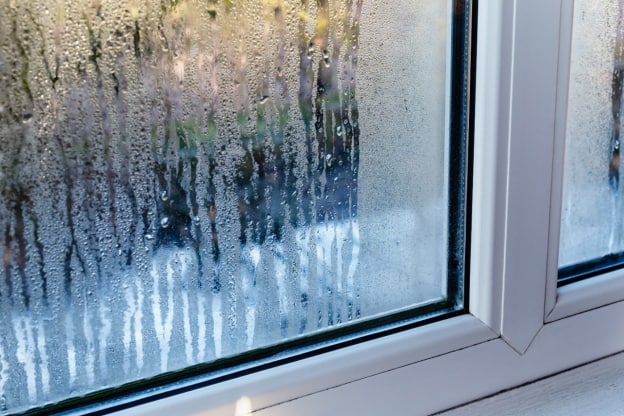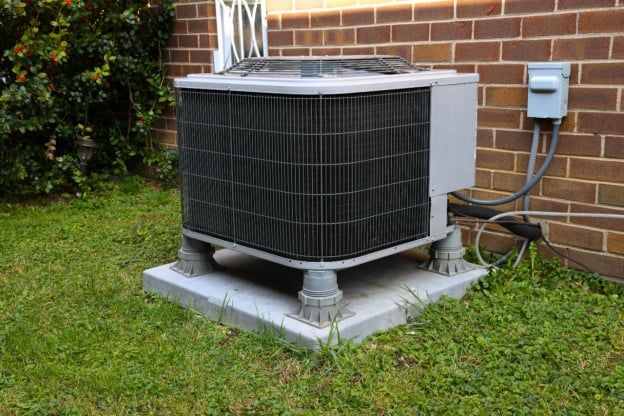5 Signs Your Home Has Poor Indoor Air Quality
The air we breathe is important to our overall health and wellbeing. While we often associate pollution with the outdoors, there can be just as much pollution lurking in your home. Poor indoor air quality can be caused by everything from inadequate ventilation, household products, and environmental contaminants, leaving you breathing in air that can contribute to health problems.
Wondering if you have indoor pollution? Here are 5 signs your home has poor indoor air quality and what you can do about it from the experts at Service Champions.
Can Poor Indoor Air Quality Affect Your Health?
Indoor air can harbor a lot of pollutants, some of which can contribute to adverse health effects like asthma, allergic reactions, heart disease, pneumonia, and cancer. For people with existing respiratory or heart conditions, children, and the elderly, the health risks of indoor pollution are even more serious.
The common pollutants in indoor air include:
- Radon:Radon is a radioactive gas that can find its way into your home. If you don’t treat it, radon can lead to health problems like lung cancer. While you can use test kits to check for unsafe levels of radon, it’s best to get professional testing to be sure.
- Secondhand smoke: Secondhand smoke is smoke exhaled from cigarettes that someone else is smoking. Exposure to secondhand smoke may have a higher risk of developing health problems, including certain types of cancer. If you or a family member smokes, it’s best to have them smoke outside to avoid secondhand smoke in your home.
- Formaldehyde: Formaldehyde is emitted by common household items like furniture and wood glues. Too much exposure to formaldehyde can lead to respiratory issues like bronchitis. Buying older furniture is better than new, since a lot of the formaldehyde has already seeped out over time.
- Cleaning products: Some cleaning products have chemicals that can stay in the air, such as glass cleaners and bleach solutions. Choose nontoxic cleaning products whenever possible to preserve your indoor air quality.
Signs of Poor Indoor Air Quality
1. Persistent Respiratory Issues

One of the most immediate and noticeable signs of poor indoor air quality is the development or worsening of respiratory issues. If you or your family members frequently experience symptoms like coughing, sneezing, shortness of breath, or irritation of the eyes and throat within the confines of your home, it could be because of pollution.
Common indoor air pollutants that contribute to respiratory issues include dust mites, pet dander, mold spores, and particulate matter. Additionally, volatile organic compounds (VOCs) emitted by certain household products and building materials can also irritate the respiratory system. To address this issue, it’s crucial to identify and eliminate the sources of indoor air pollutants. Regular cleaning, proper ventilation, and using air purifiers can significantly reduce the presence of respiratory irritants in your home.
2. Unpleasant Odors Indoors
Unpleasant odors in your home are more than a nuisance. They can indicate poor indoor air quality. A lot of things can contribute to foul smells, including mold and mildew growth, cooking odors, tobacco smoke, and VOCs emitted by household cleaners and paints. These odors can linger in enclosed spaces, affecting your overall indoor air quality.
To improve indoor air quality and eliminate unpleasant odors, it’s essential to address the root causes. Proper ventilation, regular cleaning, and the use of air purifiers with activated carbon filters can help remove airborne particles and neutralize odors. In addition, adopting natural cleaning products and minimizing the use of synthetic fragrances can contribute to a healthier indoor environment.
1. Excess Humidity

Having high humidity levels in your home can lead to a range of issues, including mold growth, dust mites, and the proliferation of other allergens. Mold spores thrive in damp environments. If you inhale them, you can end up with worsening allergies and respiratory problems. if you notice signs of excessive moisture, such as damp walls, a musty smell, or condensation on your windows, it’s important to address the humidity levels.
Controlling indoor humidity levels can significantly improve air quality. Ensure proper ventilation in areas prone to moisture, such as bathrooms and kitchens, and consider using dehumidifiers to maintain optimal humidity levels (usually between 30% and 50%). Regularly inspect and address water leaks promptly, as standing water provides an ideal breeding ground for mold and mildew.
4. Increase in Allergy or Asthma Symptoms
Poor indoor air quality can worsen allergy and asthma symptoms, making it especially challenging for individuals with pre-existing respiratory conditions. If you or your family members experience an increase in allergy symptoms such as sneezing, congestion, or itchy eyes, or if asthma symptoms become more frequent or severe, it may be a sign that your home’s indoor air quality needs improvement.

Common indoor allergens, including pollen, dust mites, pet dander, and mold spores, can trigger allergic reactions and asthma attacks. To reduce allergen exposure, implement measures such as regular cleaning, using allergen-proof bedding, and investing in high-efficiency particulate air (HEPA) filters for your HVAC system. In addition, maintaining a clean and clutter-free home can minimize the accumulation of dust and allergens.
5. Visible Mold Growth
Like humidity, mold growth is a clear indicator of excessive moisture and poor indoor air quality. Mold can proliferate in hidden areas, such as behind walls, under carpets, and in damp basements, making it challenging to detect. However, visible mold growth on walls, ceilings, or other surfaces is a definite sign that the indoor environment is contributing to mold development.
Exposure to mold can cause respiratory issues, allergic reactions, and other health problems. To address mold growth, it’s crucial to identify and eliminate the source of moisture. Repair leaks promptly, improve ventilation, and consider using dehumidifiers in areas prone to high humidity. Thoroughly clean and remove mold from affected surfaces using appropriate cleaning solutions. When you’re finished cleaning, ensure that the affected areas are adequately ventilated during and after the cleaning process.
How to Improve Indoor Air Quality
Increase Ventilation
- Get fresh air:Open your windows and doors to allow fresh outdoor air to circulate through your home.
- Turn on exhaust fans:Use exhaust fans in bathrooms, kitchens, and other areas with a lot of moisture or pollutants.
Regular Cleaning
- Dust and vacuum regularly:Dust and vacuum your surfaces, carpets, rugs, and upholstery to reduce the buildup of dust mites and allergens.
- Clean up mold:Address any visible mold as soon as possible. It may be best to hire a professional mold removal company to ensure it doesn’t come back.
Control Humidity
- Get dehumidifiers:Use dehumidifiers in areas prone to high humidity, such as basements and bathrooms. Maintain the optimal humidity levels to discourage mold and mildew growth.
- Fix leaks:Repair any water leaks as soon as possible to prevent the growth of mold and mildew.
Choose Low-VOC Products
- Avoid VOCs:Select low-VOC paints and finishes when renovating or painting your home.
- Use natural products:Opt for natural cleaning products that don’t use harsh chemicals.
Maintain Your HVAC System

- Change air filters:Change your air filters regularly in your HVAC system to ensure the efficient removal of airborne particles.
- HVAC maintenance:Schedule professional maintenance from a licensed HVAC technician to make sure it’s functioning properly.
Limit Indoor Smoking
- Designate an outdoor smoking area:If you or someone in your household smokes, designate an outdoor area for smoking to prevent the introduction of tobacco smoke indoors.
- Quit smoking:While outdoor smoking helps, it’s best to encourage everyone to quit smoking to reduce the exposure to secondhand smoke.
Use Air Purifiers
- HEPA filters:Filters equipped with high-efficiency particulate air (HEPA) filters trap and remove airborne particles, including dust, pollen, and pet dander, to keep the air cleaner.
- Activated carbon filters:Activated carbon filters for air purifiers can also remove VOCs from the air and neutralize odors.
- Get houseplants:Some houseplants can improve indoor air quality by absorbing pollutants and releasing oxygen. Consider plants like snake plants, spider plants, and peace lilies.
Reduce Indoor Allergens
- Keep pets clean:Regularly groom pets and clean their bedding to reduce the presence of pet dander.
- Reduce your allergens:Use allergen-proof bedding to minimize exposure to dust mites. Make sure to wash bedding at least once a week.
Monitor Indoor Air Quality
- Air quality monitors:Use air quality monitors to regularly assess the indoor air quality and make adjustments as needed.
- Professional testing:Indoor air quality testing can reveal the pollutants in your home. Professional testing often includes recommendations to improve yourindoor air quality as well.
Protect Your Indoor Air Quality
Maintaining good indoor air quality is essential for your health and wellbeing. If you notice any of the signs of poor indoor air quality, including respiratory issues, unpleasant odors, excessive humidity, increased allergy symptoms, or visible mold growth, it’s crucial to get them fixed as soon as possible.

Want to improve your indoor air quality? Contact the pros at Service Champions to schedule your appointment!

